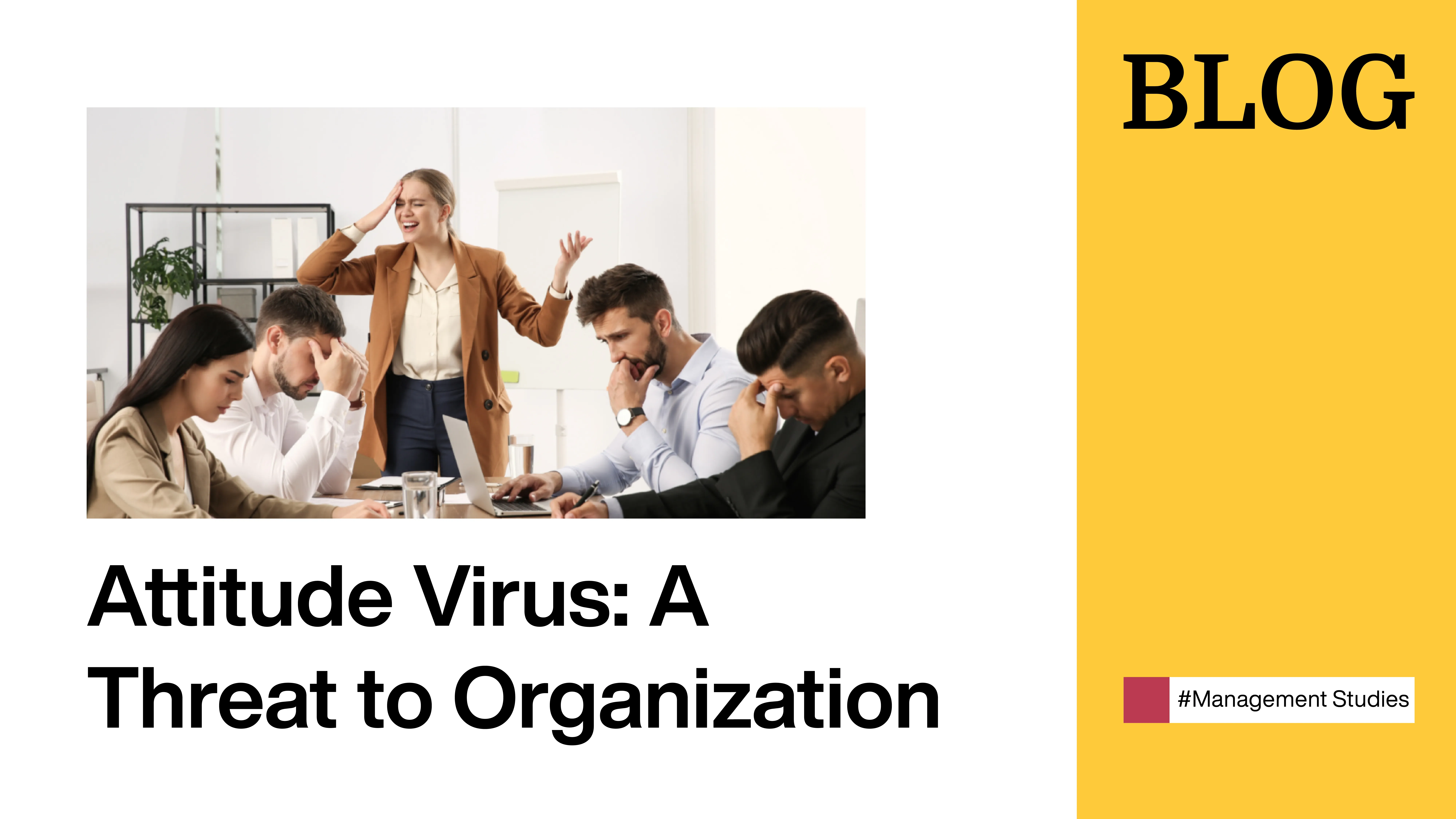Everybody's attitude has a significant impact on their life. People vary their attitudes depending on the time of day and the circumstances. Everyone is defined by two things: "attitude when we have everything" and "patience when we have nothing." The attitude virus spreads widely and endures a lifetime.This virus is easily detectable in behavioral traits such as speech patterns,reactions, and responses. Whether in a small or large organization, the majority of people move between them because of attitude issues. Negative attitudes can manifest as a variety of behaviors, such as arguing with coworkers pointlessly, trying to end conversations in the middle of them,failing to carefully follow company standards, and many more.
In the business world, there are instances when handling certain situations can be extremely challenging and result in confrontations among coworkers because of attitude issues. How thus can an organization combat the attitude virus?Organizations must concentrate more on a few key areas in order to address this issue. For example, top management must evaluate any issues with employee attitudes at all levels of the company. Sincere oversight is necessary for this at every level, including that of suppliers, customers, vendors, and staff. The next step is the assessment: choose managers with the necessary abilities and aptitude to recognize human psychology. It is the responsibility of managers to conduct motivational workshops with employees who exhibit negative attitudes.
Supervisors must to designate deputies who are capable of closely examining employees'conduct within the company. Occupational therapy is the next area in the solution process, and now is the time for managers to assume the extra obligations of their staff members and provide them with appropriate guidance.Employees must attend ongoing motivational seminars in order to overcome their pessimistic outlook. Counseling is another highly effective strategy for shedding negative attitudes. Managers have the ability to contact both internal and external motivational speakers and counselors. It will also be beneficial to run a step-by-step program or course for having an optimistic outlook. After the training sessions are over, it is preferable to collect employee input for the final monitor & feedback. Subsequently, employee conduct must be observed to determine whether or not the training sessions were beneficial to the staff. Maintaining decorum in an organization and putting attitude issues aside will also require searching for what circumstances, results, and attitude might improve the situation.
In conclusion, I would like to say that a negative attitude can impact everyone and lead to conflict among coworkers in a working context. A productive employee with a little attitude issue is not a distraction, and under certain situations, the majority of employees can overlook attitude difficulties. If a manager wants to keep rising attitude issues at work from becoming a distraction, they must understand how to see them.

